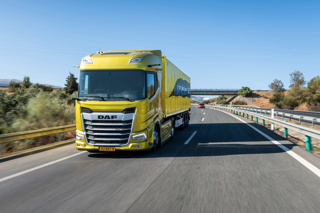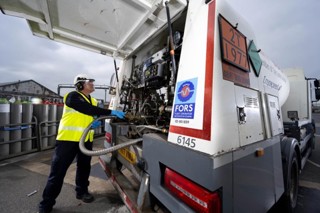Ministers are considering allowing more extra-long trailers on UK roads after an ongoing trial demonstrated their safety record and efficiency gains.
The Department for Transport (DfT) launched the 10-year trial in 2012, permitting up to 1,800 longer semi-trailers (LSTs) to operate under Vehicle Special Orders (VSOs), which are granted by the Vehicle Certification Agency (VCA).
Four years and 146 million miles later, the pilot has saved more than 6.5m vehicle miles and cut up to 90,000 journeys.
Transport minister John Hayes said: “Lorries are the engine of our economy and this pilot scheme is helping hauliers deliver the day-to-day goods we need more efficiently. This is good news for consumers, a boost for motorists as it is helping cut congestion with fewer vehicles on the road, and it is also helping the environment.”
The trailers are up to 15% longer than the standard 13.6-metre units, with the longest examples operating at a length of 15.65 metres.
“There are now 151 operators in the trial,” said Jack Semple, director of policy for the Road Haulage Association (RHA). “But it is clear from our members that both existing longer semi-trailer operators and other hauliers could make good use of more of these trailers. The Government should release more permits to allow them to do so.”
However, not everybody is keen to see the wider rollout of the extra-long trailers, with Philippa Edmunds, from the Campaign for Better Transport, opposing their use in the interests of road safety.
She claims the Government is ignoring the danger posed by longer trucks on urban roads. “Our concern is that these longer trucks will become the new standard trucks operating on all roads, regardless of the dangers to other road users,” she said.
“We want to see the Government limit their use to designated local authority routes within urban areas to reduce the risks to other road users, protect pavements and property from damage, and reduce the current financial burden of repairs that currently falls on local authorities and taxpayers.”
Previous analysis by Campaign for Better Transport has shown that LSTs have almost double the tail swing of standard HGVs, which, it says, makes them unsuitable for use in towns and cities.
However, the DfT’s latest report on the trial says there is “no evidence” to suggest that the safety risk of the extra-long trailer “is any worse than that of normal HGV trailers”.
In fact, it said: “Looking at all the operations, there may be evidence that they are performing better.”
Nationally, on a per kilometre basis, LSTs have been involved in around 70% fewer personal injury collisions and casualties, in comparison to the average for standard articulated HGVs.
But the DfT says it wants to continue collecting data on the road safety record of LSTs until the end of 2017, so it can confirm this with a degree of statistical confidence. “We do not yet have sufficient data regarding the safety risk performance of LSTs, specifically in urban operations,” it said.
DfT argues that despite their bigger size, LSTs meet the existing manoeuvrability requirements and maximum weight limit of 44 tonnes for six-axle vehicles.
It concluded: “Following these positive results we are consulting trade associations and participants on whether to increase the number of vehicles in the trial.”






















Login to comment
Comments
No comments have been made yet.